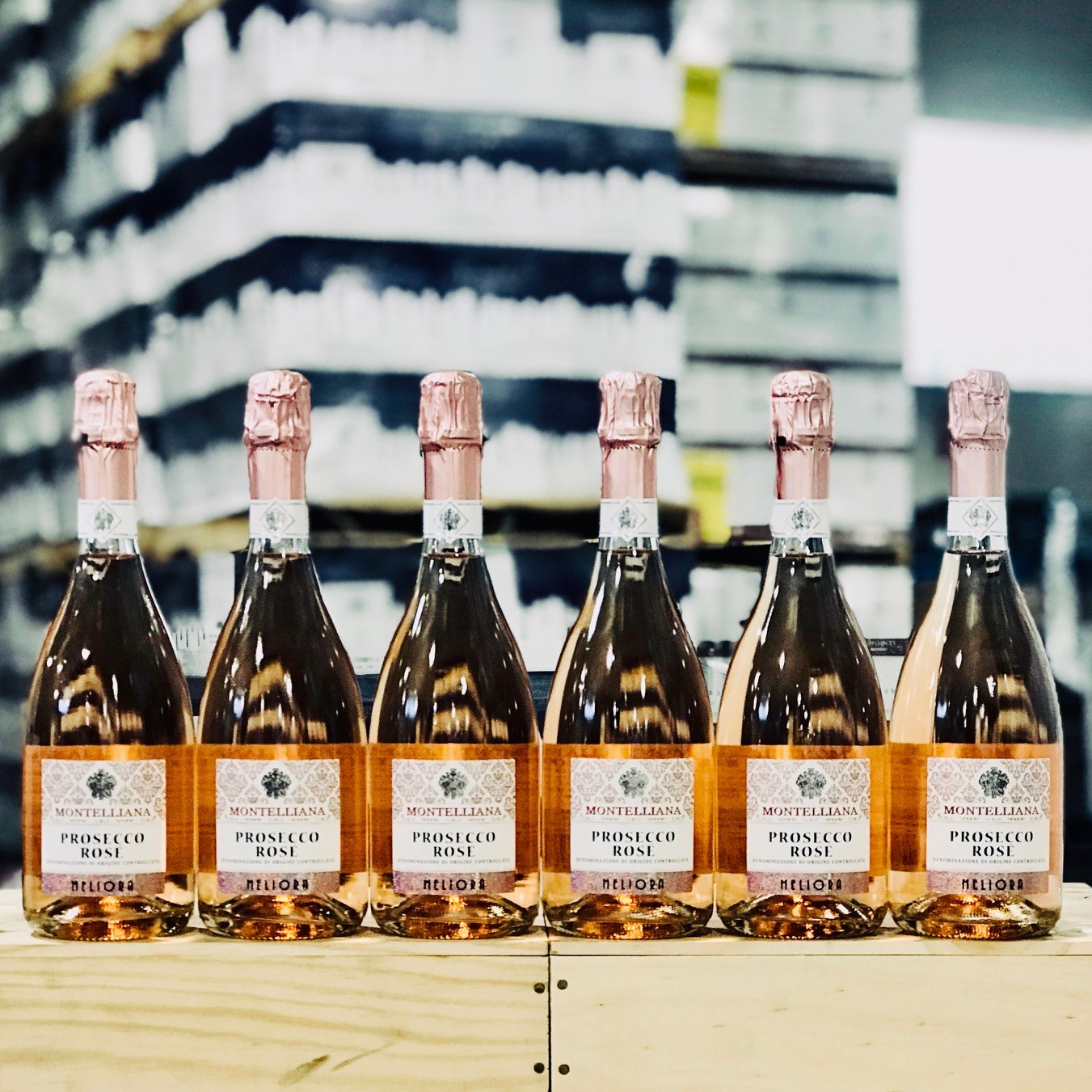We sure are having a crazy run on bubbles so far this week. How about you?
It is like being in the toilet paper business back in May of 2020.
What on earth is going on?!? Here are today’s “water cooler theories” in Grapeland:
A) People prepping for Inauguration Day “day drinking” parties.
B) Pre-Valentine’s Day stockpiling
C) Excitement over the just landed wines from Italy’s new “Prosecco Rosé” DOC
D) Celebration for the arrival of these vaccines **we actually know people getting theirs this week, how fantastic is this news**
E) All of the above
Whatever the reason for this “froth surge,” Montelliana’s Prosecco Rosé “Meliora” has arrived – If you’d like to know more about this “new” Italian DOC, scroll on below for our quick scoop, and feel free to use this in your own email blasts, newsletters, etc.
Q: When did this happen?
A: The first examples showed up stateside this month.
Q: Why wouldn’t Italy time this so that the appellation was launched in time for the US holiday season?
A: The appellation rules were written by government bureaucrats, what do you expect?
Q: Ok so what exactly is this thing you call Prosecco Rosé DOC?
A: Prosecco rosé is a blend of the region’s naive Glera grape (this is what makes up most “regular” Prosecco) and Pinot Noir (producers may add up to 15%).
Q: Wait….Pinot Noir in Prosecco?
A: Yes, this is the only red grape allowed in the DOC, and even still, it is only permitted when fermented without skins.
Q; Everything I keep seeing in market this week is very pale in color – Is color regulated by the DOC?
A: Yes – This is intentional – By definition the color will be very pale as the “no skin fermentation rule” prohibits a situation where producers are able to add “red wine” to the mix as is common in other sparkling wine appellations around the world including Champagne. No skin fermentation means minimal color influence. The thinking here by the creators of the DOC was to mimic the elegant look, feel, and to some extent flavor, of Provence rosé. This leaves a producer two ways to control final color – The percentage of Pinot Noir used in the final blend, and adjusting how long the Pinot Noir component is macerated on skins prior to fermentation.
Q: Why are all of these new Prosecco rose’s vintage dated?
A: This is part of the regulation – The idea here from the officials responsible for creating the DOC was for this to be a “premium” category. With the DOC being brand new (created out of thin air) this is also quite convenient as a starting point. This quirk will be annoying for all of us in the trade, as any rosé wine with a vintage comes with perceived (and mostly invalid) shelf-life “baggage” towards the “end” of a given vintage in market.
Q: Prices on the big names look higher than I would have expected – Will Prosecco rosé be more expensive than a producer’s equivalent workhorse non-vintage bottling?
A: Yes – Most of these are running 2-4 price points higher thus far compared to the same producer’s flagship NV bottling. Why? Easy – The provenance is usually better in these “vintage” wines, Pinot Noir is much less prolific and more expensive to grow than Glera, for those without Pinot Noir vineyards of their own high demand and limited supply within the appellation boundaries mean high fruit costs, aging requirements are longer, and above all else the market seems happy to plonk down $15-$20 on high quality bubbles from this area.
Q: As is the case with “regular” Prosecco, are these wines carbonated using the “tank method” rather than the “Champagne method”?
A: Yes – The soft texture produced by injecting CO2 in tank results in the soft palate texture consumers associate with Prosecco. In technical terms Prosecco has less than half of the carbonation as Champagne – 45 PSI in the former versus 100 PSI in the latter. Not only does this mean softness but it also means less perceived acidity (think CO2 = Carbonic ACID).
Q: I heard that Prosecco rosé DOC is required to be aged twice as Prosecco DOC – Is this true?
A: Yes – Prosecco rosé is required to be aged for a minimum of 60 days, versus the required 30 days for “regular” Prosecco. This will result in a touch more complexity in finished wines due to autolysis (think crusty, yeasty, honey-ish flavors). We are happy about this – The extended aging requirement will make the world a 0.0000000000001% happier place?
Q: Some of the “big brand” examples seem a bit sweet, while the few “indie” examples I’ve tasted are nice and dry – Is sweetness regulated in this new DOC?
A: Yes – Producers are allowed to finish with as low a sugar level as they dare for “brut nature,” and can leave sugar levels as high as 17 g/L for a most commercial “extra dry” bottling. Our version from Montelliana falls somewhere in between, finishing at what we consider a perfect 9 g/L.
Q: Why is this DOC and not DOCG?
A: The appellation did not want to affect the already existing premium (mostly hillside, high rent zones) of Valdobbiadene, Asolo, and Conegliano, so these areas are off-limits for Prosecco rosé and will continue to function as ultra-premium DOCG appellations for traditional “white” Prosecco.
Q: Has there been any pushback from smaller, more “indie” houses on the creation of this appellation?
A: Yes – Some question the designation of Pinot Noir as the “red varietal” used, arguing that a red grape native to the region would make for a more authentic final wine. We tend to agree with this sentiment, but also understand the thinking of those who wrote the rules here, that Pinot Noir grows well in this area of Italy, is probably the best option in terms of pure “deliciousness factor,” and is also something that the public can understand/wrap their heads around.
Q: What next?
A: Go out there, explore the market, and buy some of this pink goodness for your favorite merchants!


